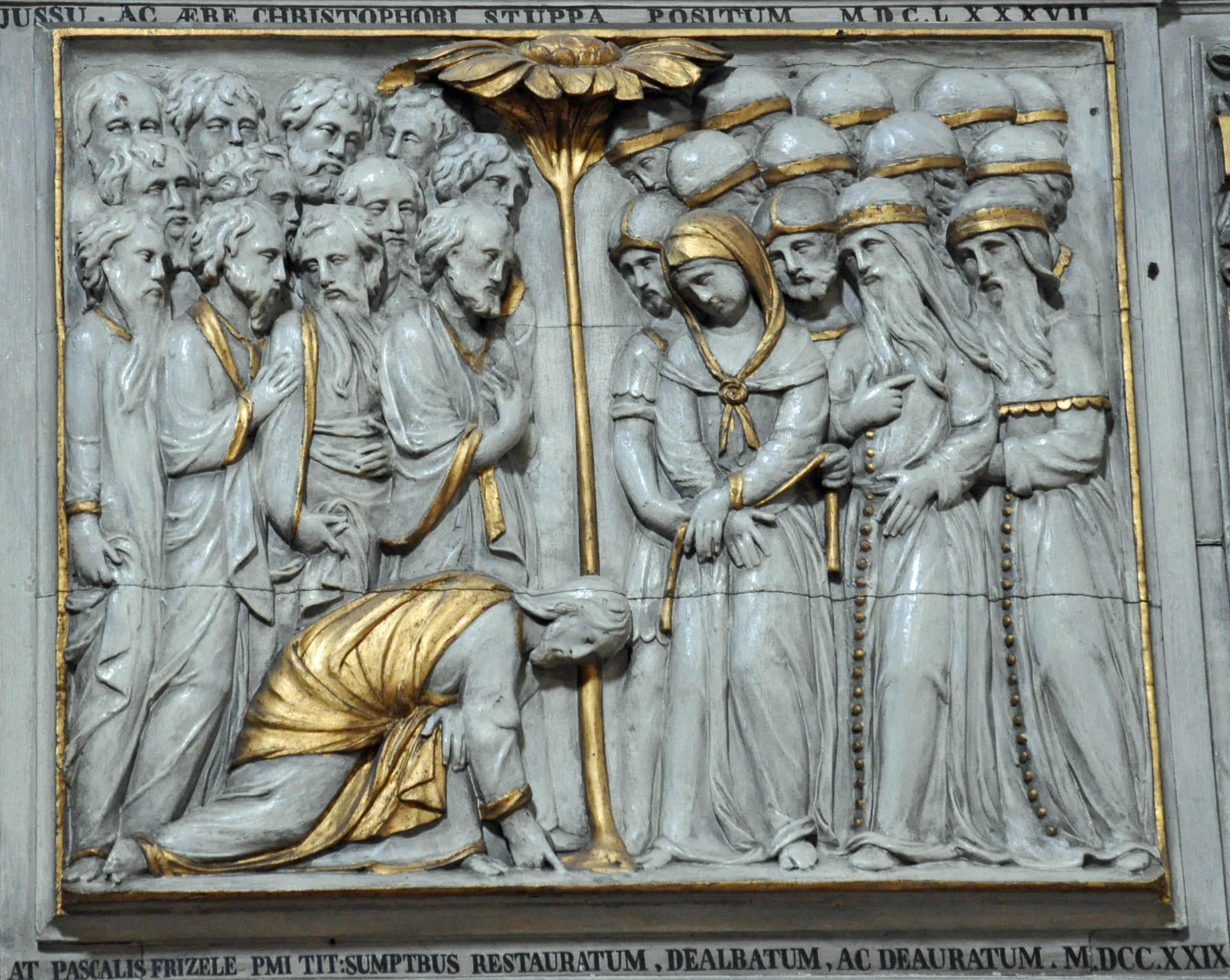The Woman Taken in Adultery

1677 (restored 1729)
Main panel in the
ambo
The "ambo" in a Catholic church is the pulpit.
of the Church of St. Raphael, Venice
In John 8:1-11, Jewish authorities bring to Jesus a woman caught in the act of adultery. Knowing that Jesus has been preaching about mercy and that Mosaic law requires the stoning of adulterers, they hope to catch him in a dilemma. He writes something in the dirt and famously suggests that he who is without sin should cast the first stone. In the image we see the accusers on the right, the twelve Apostles on the left, and in the center the woman and Jesus. The only element not drawn directly from John 8 is the tree, with Jesus writing at its root and fruit growing from its crest.
Christian commentators interpreted the adulteress symbolically as the individual sinner who returns to Christ and allegorically as Ecclesia, the Church. Having "fornicated with demons" during the time of the Old Law she is now returning to her true husband (Glossa, V, 1153-54). The tree symbolically divides her old way of living from a life with her spouse. His bending deeply down to break that division "is an expression of humility, signifying that his law was written on the earth which bore fruit, not on the barren stone as before" (Catena, IV, i, 282). The fruit at the top of the tree alludes to that interpretation.
View this image in full resolution.
More images of the Woman Taken in Adultery.
Photographed at the church by Richard Stracke, shared under Attribution-NonCommercial-ShareAlike license.